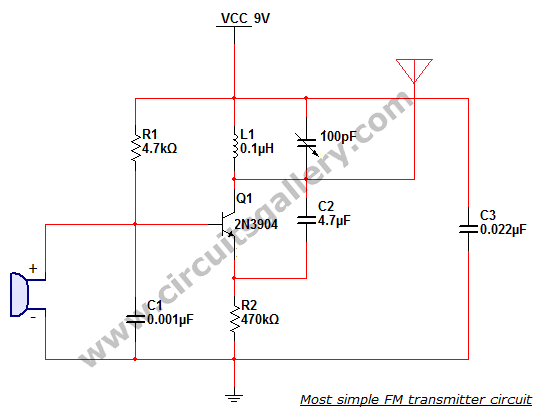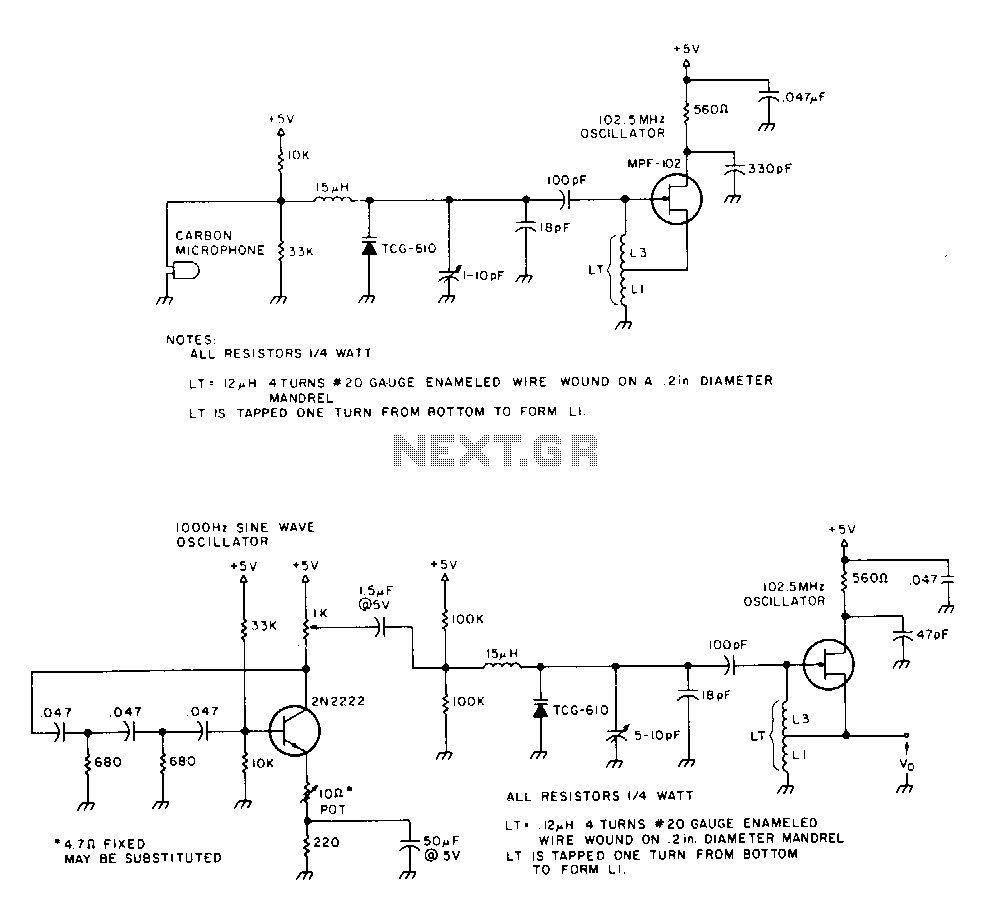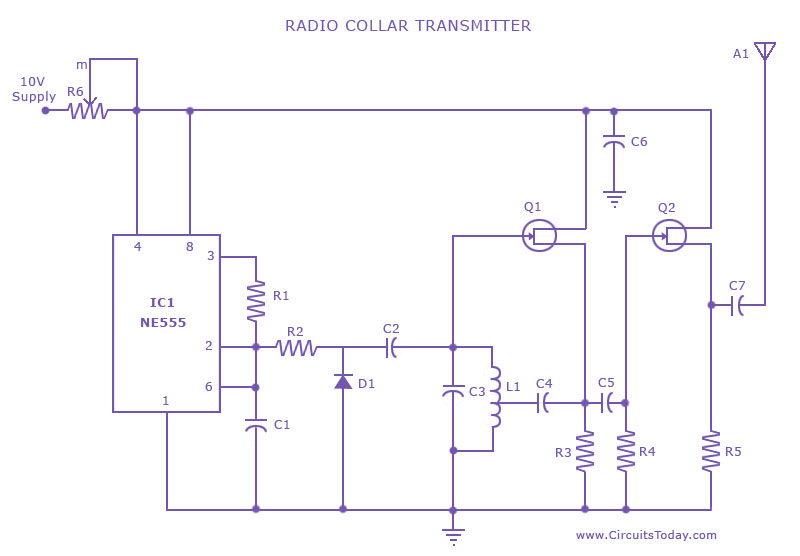
tv transmitter and pal video modulation

The following is a series of simple TV transmitters utilizing negative sound modulation and PAL video modulation. This design is suitable for countries employing TV systems B and G. Inductor L1 can be constructed using 24 SWG wire, consisting of 4 turns with a diameter of 6 mm. The transformer T1 can be sourced from a radio frequency transformer with an internal capacitor, which can often be found in older transistor radios.
The described TV transmitter circuit operates by employing negative sound modulation alongside PAL (Phase Alternating Line) video modulation techniques. The circuit is designed specifically for compatibility with television broadcasting standards B and G, which are commonly used in several regions worldwide.
Inductor L1 is a crucial component in this circuit, serving as a part of the oscillator circuit. It can be fabricated using 24 SWG (Standard Wire Gauge) wire, wound into a coil with four turns and a diameter of 6 mm. This specification allows for the appropriate inductance required for the modulation process, ensuring that the transmitter operates efficiently within the desired frequency range.
Transformer T1 plays a vital role in the circuit by facilitating the transfer of energy between the transmitter and the antenna. This transformer should be selected carefully; an ideal choice would be an RF transformer that includes an internal capacitor, as this can help in tuning the circuit to the required frequency. Such transformers are often salvaged from older transistor radios, making them accessible for DIY projects.
The overall design emphasizes simplicity, making it suitable for hobbyists and engineers looking to experiment with television transmission technology. The use of readily available components, such as wire for the inductor and transformers from obsolete devices, underscores the practicality of this circuit. Proper assembly and tuning of the transmitter will yield a functional device capable of transmitting television signals effectively within the specified standards.The following is a series of simple TV transmitter using negative using sound modulation and PAL video modulation. This is suitable for countries using TV systems B and G. Inductor L1 can be made by wire email (24SWG) 4 convolution with 6mm diameter and T1 can be used with a radio frequency transformer internal capacitor.
(Can be found on the old transistor radios). 🔗 External reference
The described TV transmitter circuit operates by employing negative sound modulation alongside PAL (Phase Alternating Line) video modulation techniques. The circuit is designed specifically for compatibility with television broadcasting standards B and G, which are commonly used in several regions worldwide.
Inductor L1 is a crucial component in this circuit, serving as a part of the oscillator circuit. It can be fabricated using 24 SWG (Standard Wire Gauge) wire, wound into a coil with four turns and a diameter of 6 mm. This specification allows for the appropriate inductance required for the modulation process, ensuring that the transmitter operates efficiently within the desired frequency range.
Transformer T1 plays a vital role in the circuit by facilitating the transfer of energy between the transmitter and the antenna. This transformer should be selected carefully; an ideal choice would be an RF transformer that includes an internal capacitor, as this can help in tuning the circuit to the required frequency. Such transformers are often salvaged from older transistor radios, making them accessible for DIY projects.
The overall design emphasizes simplicity, making it suitable for hobbyists and engineers looking to experiment with television transmission technology. The use of readily available components, such as wire for the inductor and transformers from obsolete devices, underscores the practicality of this circuit. Proper assembly and tuning of the transmitter will yield a functional device capable of transmitting television signals effectively within the specified standards.The following is a series of simple TV transmitter using negative using sound modulation and PAL video modulation. This is suitable for countries using TV systems B and G. Inductor L1 can be made by wire email (24SWG) 4 convolution with 6mm diameter and T1 can be used with a radio frequency transformer internal capacitor.
(Can be found on the old transistor radios). 🔗 External reference





